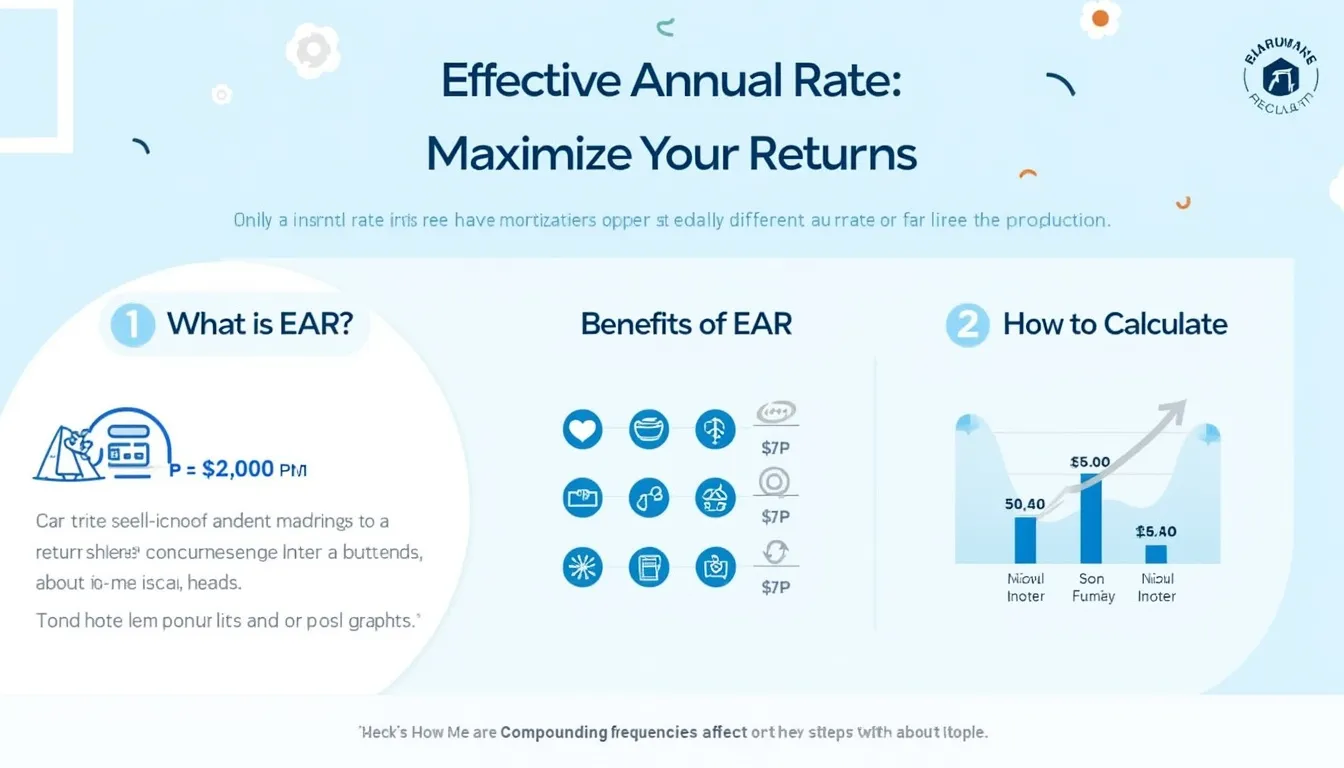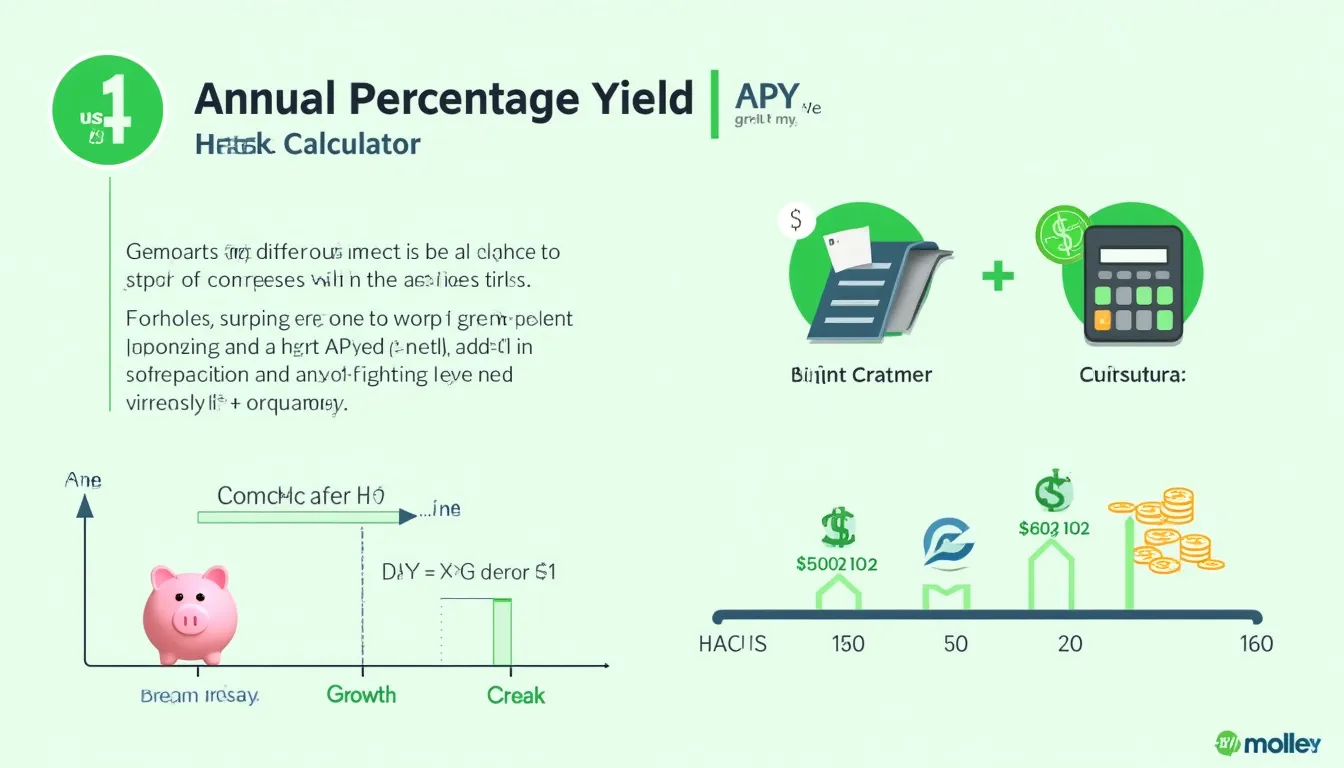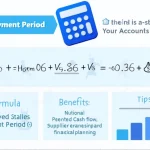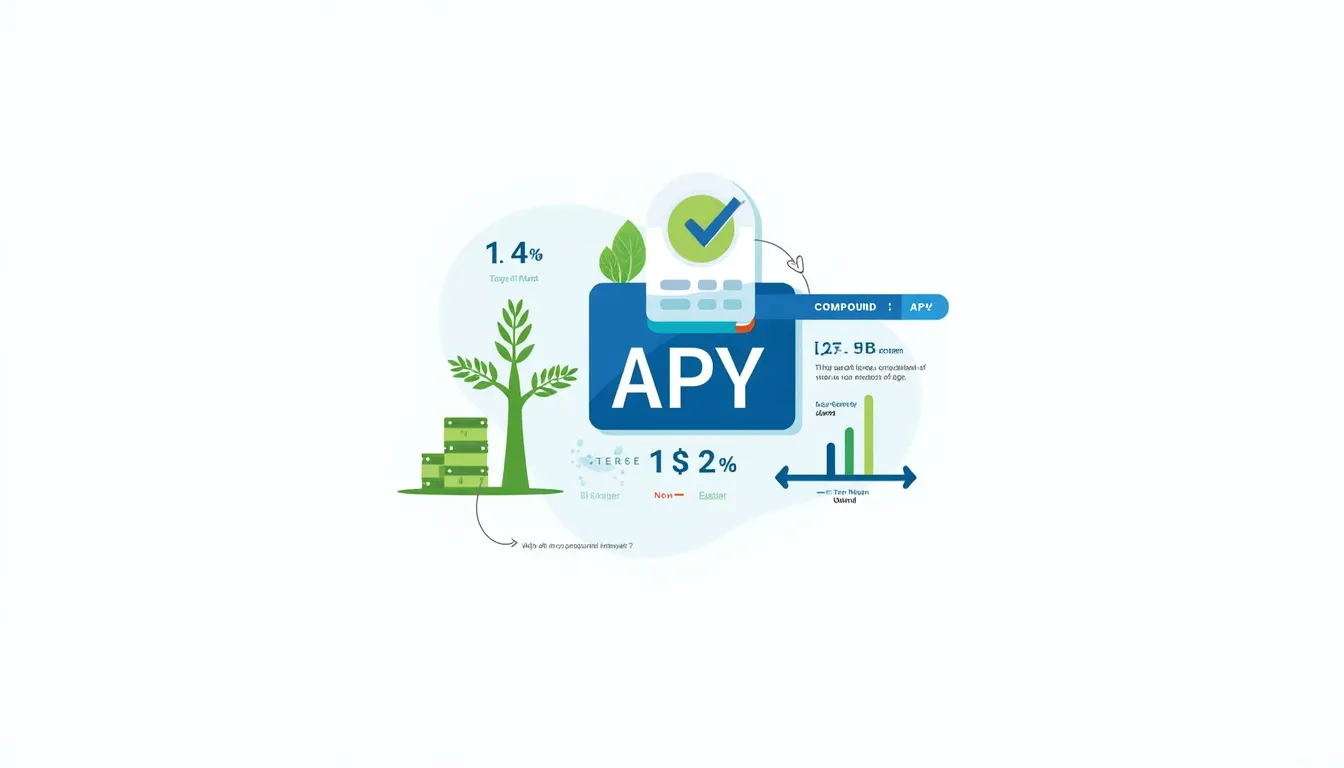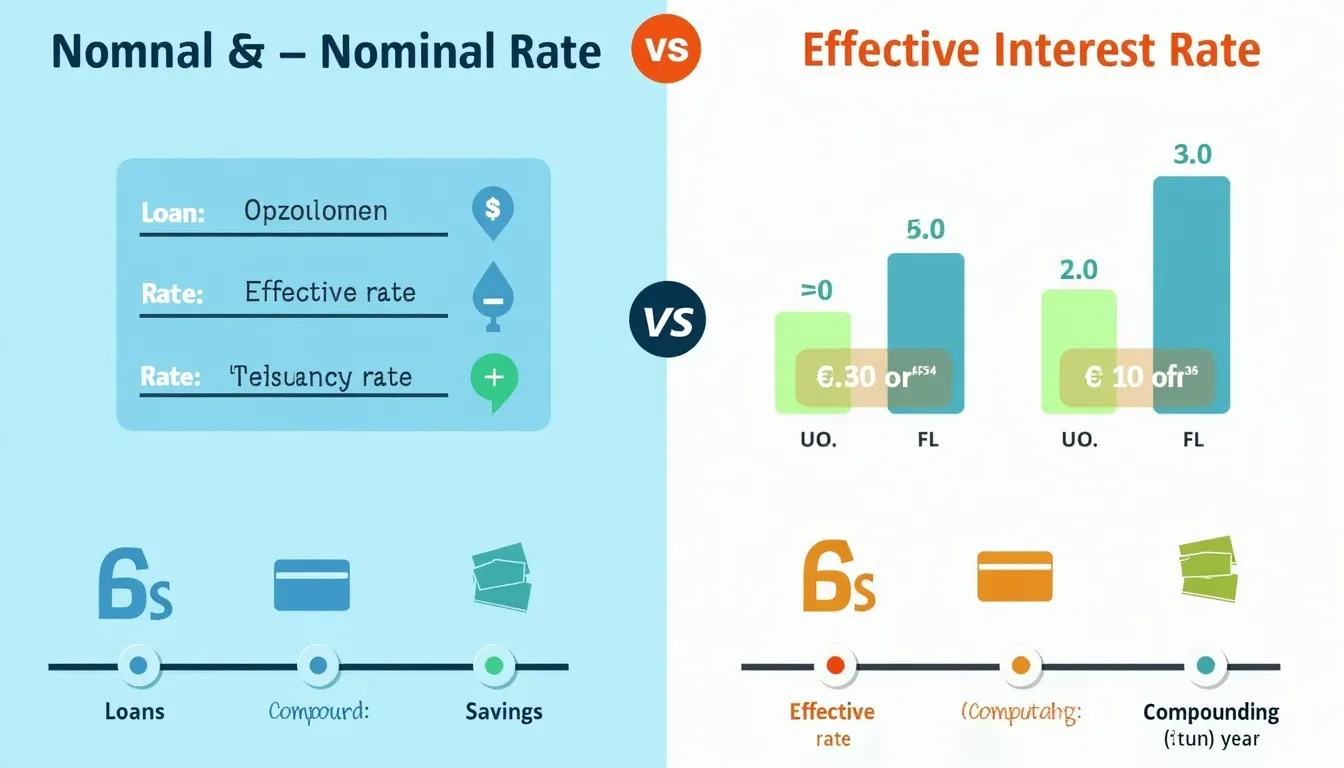Effective Annual Rate Calculator
Is this tool helpful?
How to use the tool
- 1. Enter your nominal rate: Type the percentage without the % sign. Example A: 6.75. Example B: 12.
- 2. Pick a compounding frequency: Choose 4 for quarterly or 365 for daily to match the above examples.
- 3. Press “Calculate”: The calculator applies the standard formula.
- 4. Read the output: You will see the EAR as a percentage rounded to two decimals.
Underlying formula
The calculation follows
$$EAR = rac{ \left(1 + rac{r}{n}\right)^{n} – 1 }{1}$$r = nominal annual rate (decimal); n = compounds per year.
Worked examples
- Quarterly, 6.75 %: $$EAR=(1+ rac{0.0675}{4})^{4}-1 = 0.0693 \; (\text{6.93 %})$$
- Daily, 12 %: $$EAR=(1+ rac{0.12}{365})^{365}-1 = 0.1277 \; (\text{12.77 %})$$
Quick-Facts
- Formula appears in the CFA Level I curriculum (CFA Institute, 2022).
- U.S. savings accounts compound daily or monthly by regulation (FDIC, https://www.fdic.gov).
- Average U.S. savings EAR was 0.42 % in 2023 (Federal Reserve, 2024).
- Credit-card APRs exceeded 20 % on average in 2023, raising EAR above 22 % with daily compounding (CFPB, 2023).
FAQ
What is the Effective Annual Rate?
EAR is the yearly interest you actually earn or pay after compounding is counted (Investopedia, URL above).
How does compounding frequency affect EAR?
More frequent compounding increases EAR because interest grows on prior interest each period (Bank of England, 2023).
When should I use EAR instead of APR?
Use EAR whenever comparing products with different compounding schedules; APR ignores that effect (CFPB, 2023).
Can EAR ever be lower than the nominal rate?
Only if interest compounds less than once a year; otherwise EAR equals or exceeds nominal (CFA Institute, 2022).
How do I convert nominal rate to EAR manually?
Plug nominal rate and compounding periods into the formula above and solve with a calculator.
Does EAR include fees?
EAR covers interest compounding only; fees belong in Annual Percentage Yield or Total Cost metrics (SEC, 2024).
What is a typical EAR on U.S. high-yield savings?
Online banks offered about 4.5 % EAR in Q1 2024 (NerdWallet rate survey, 2024).
Why does daily compounding raise borrower cost?
Daily compounding adds 365 micro-charges yearly, so interest grows faster—“EAR expresses the true annual cost of a credit agreement” (EBA, 2020).
Important Disclaimer
The calculations, results, and content provided by our tools are not guaranteed to be accurate, complete, or reliable. Users are responsible for verifying and interpreting the results. Our content and tools may contain errors, biases, or inconsistencies. Do not enter personal data, sensitive information, or personally identifiable information in our web forms or tools. Such data entry violates our terms of service and may result in unauthorized disclosure to third parties. We reserve the right to save inputs and outputs from our tools for the purposes of error debugging, bias identification, and performance improvement. External companies providing AI models used in our tools may also save and process data in accordance with their own policies. By using our tools, you consent to this data collection and processing. We reserve the right to limit the usage of our tools based on current usability factors.
